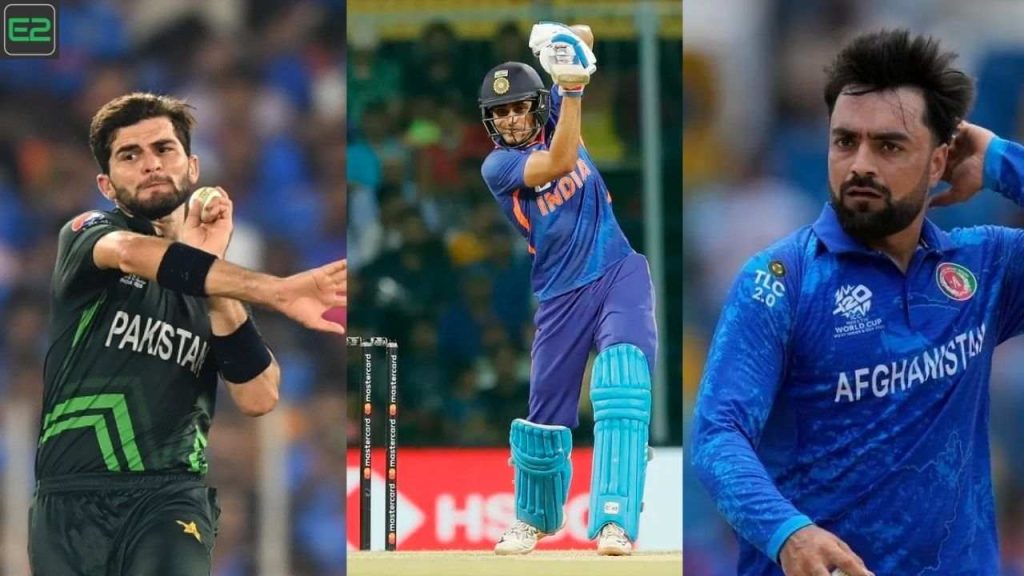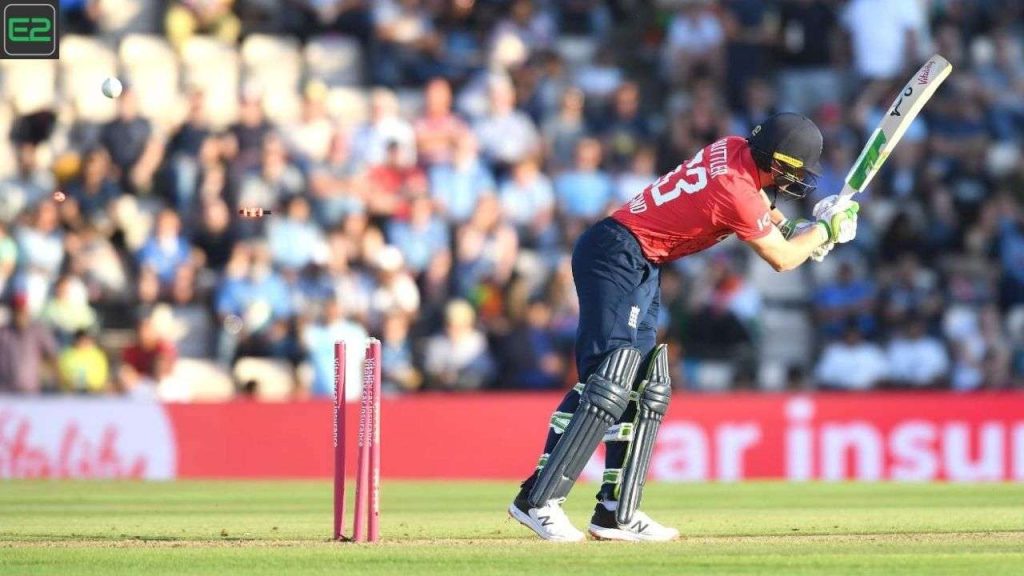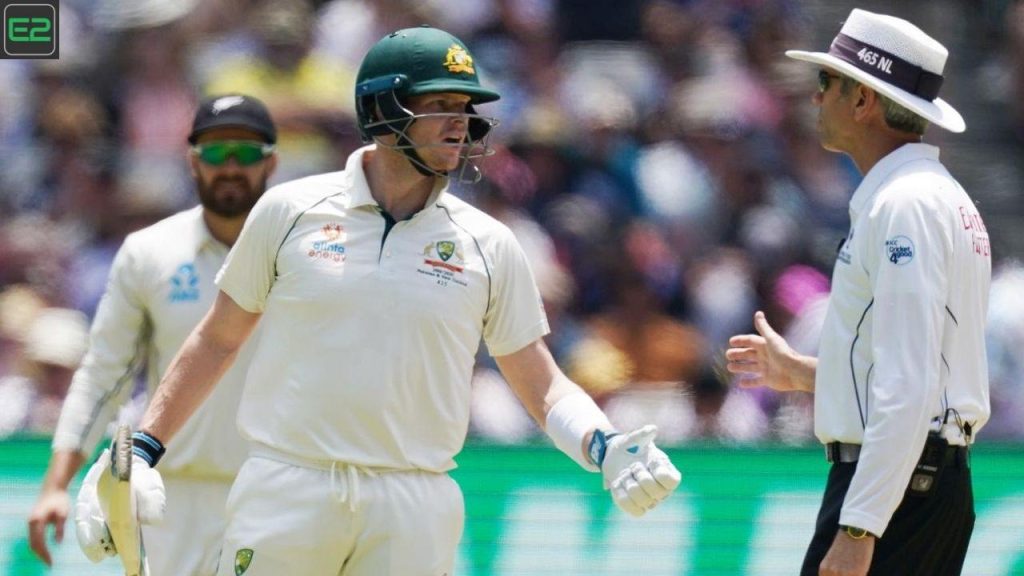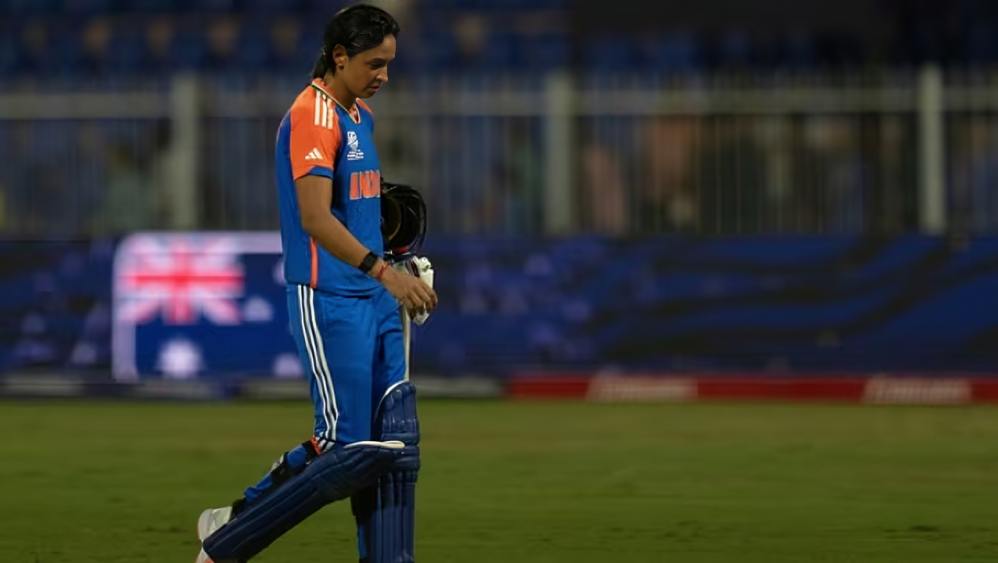Why Cricketers Play Football: Cricket and football are two of the most popular sports in the world, but they are quite different in terms of gameplay, skills, and strategy. So, why do many cricketers enjoy playing football when they’re not on the cricket field? Whether it’s a quick kickaround during practice breaks or playing full-on football matches, there’s a surprising overlap between the two sports. In fact, many professional cricketers regularly engage in football as part of their training or as a recreational activity. But beyond the fun and camaraderie, playing football offers cricketers several key benefits that can enhance their cricketing performance.
Why Cricketers Play Football
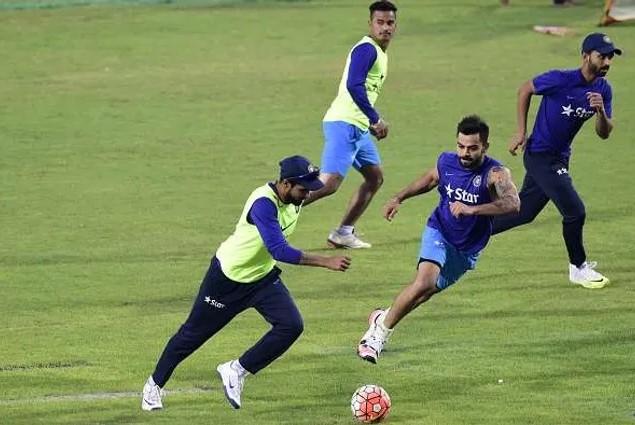
1. Improved Fitness and Endurance
Cricket may not be as physically demanding as football in terms of constant movement, but it still requires a high level of fitness, agility, and stamina—especially for fast bowlers and fielders. Football provides a great cardiovascular workout, which helps cricketers improve their endurance and overall fitness.
Football involves short bursts of sprinting, quick changes of direction, and continuous movement, all of which help cricketers develop explosive power and cardiovascular health. These qualities translate well onto the cricket field, where players often need to be quick on their feet—whether it’s sprinting between the wickets, chasing a ball in the outfield, or even just recovering after a delivery.
By regularly playing football, cricketers can improve their stamina, which can make them more efficient and effective during long cricket matches, particularly in formats like Test cricket, where the game can stretch over five days.
2. Enhanced Agility and Coordination
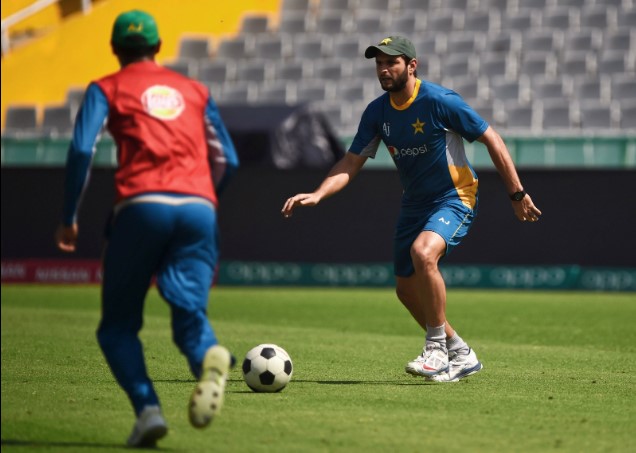
Football requires excellent footwork, balance, and coordination—skills that are also highly valuable in cricket. Cricketers often use football to sharpen their agility, as quick, fluid movements are a key part of both games.
For example, a fast bowler needs to be able to sprint towards the crease and then decelerate quickly to deliver the ball. Football enhances this type of lateral movement and improves reaction time. Fielders, especially those in slip or gully positions, need quick reflexes and the ability to react rapidly to a ball. Playing football improves coordination and helps cricketers become more agile on the field, allowing them to move quickly and adjust to the ball’s unpredictable movement.
The speed and balance required in football also help cricketers develop their spatial awareness and control over their body movements, which is crucial for batting, bowling, and fielding.
3. Mental Sharpness and Decision-Making
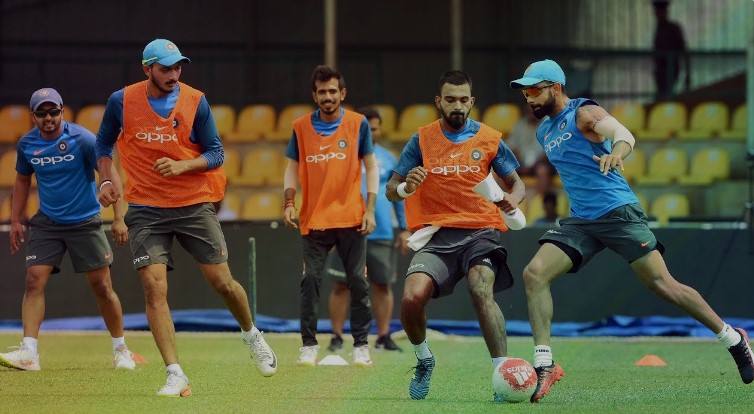
Football is a fast-paced game that demands quick decision-making under pressure. Players must assess the situation, make split-second choices, and react swiftly to changes in the game. These mental skills are easily transferable to cricket, where players need to make decisions on the fly—whether it’s reading a bowler’s delivery, choosing the right shot, or deciding when to take a risky run.
Playing football regularly helps cricketers improve their cognitive abilities, such as focus, concentration, and anticipation. This heightened mental sharpness can lead to better decision-making in high-pressure situations, whether on the cricket field or in the middle of a tight football match.
4. Team Building and Camaraderie
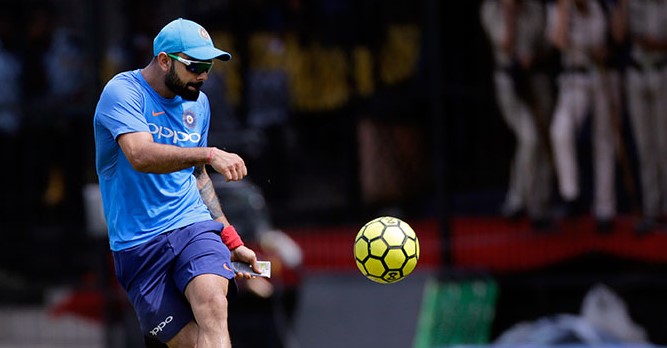
Cricket is, at its heart, a team sport, and building strong relationships with teammates is essential for success. Football provides an excellent way for cricketers to bond with one another outside of the cricket field. Whether it’s a casual game during training or a more competitive match, playing football helps players develop trust and camaraderie.
The team dynamics of football, including working together to achieve a common goal, mirror the collaboration required in cricket. Football gives cricketers a chance to engage with their teammates in a different environment, enhancing team morale and creating stronger interpersonal relationships. This sense of unity can be invaluable during cricket matches, especially when the pressure is on.
5. Injury Prevention and Rehabilitation
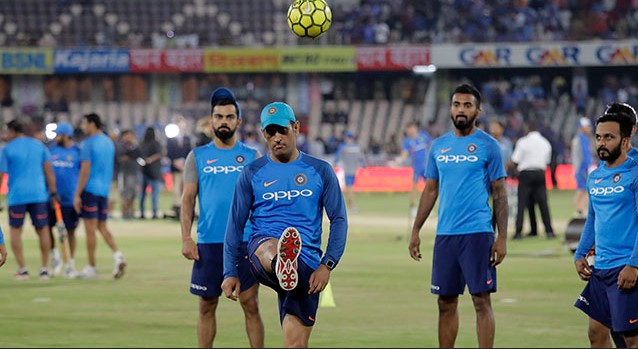
Football can also serve as a form of injury prevention and rehabilitation for cricketers. The sport’s focus on balance, flexibility, and muscle strength helps cricketers strengthen key muscle groups that are often overused in cricket. This is particularly beneficial for bowlers, who frequently suffer from injuries to their shoulders, elbows, and backs.
Football involves movements like lateral running, jumping, and quick pivots, all of which help improve muscle strength, flexibility, and joint stability. These are all important for preventing injuries related to cricket, as they reduce the stress placed on joints and muscles when performing explosive movements. For players recovering from minor injuries, football can be a gentler, less stressful way to stay active while allowing for rehabilitation.
6. Stress Relief and Mental Relaxation
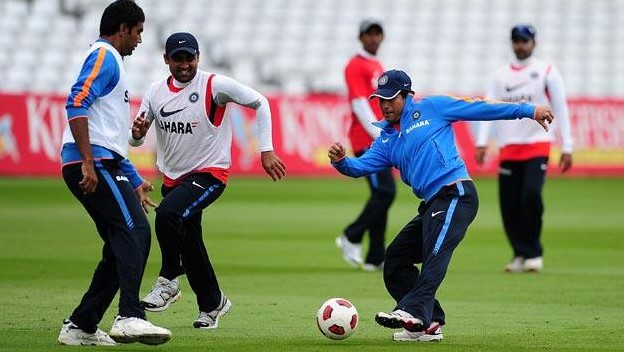
The mental demands of professional cricket can be intense, particularly during long matches or important series. Football, on the other hand, offers a more relaxed and enjoyable outlet. Playing football allows cricketers to unwind, relieve stress, and take a break from the high-pressure environment of professional cricket.
The physical activity and camaraderie involved in football can be incredibly therapeutic, providing players with a mental reset. Engaging in a fast-paced, fun game of football helps players clear their minds, relax, and refocus, which can be crucial for their performance on the cricket field.
7. Skill Transfer: Footwork and Timing
While cricket and football are different sports, they share some common skills, particularly when it comes to footwork and timing. Cricketers who play football regularly often notice an improvement in their foot movement and precision. For instance, batting requires excellent footwork to get into the right position to play a shot, while football players need precise control over their movements when dribbling or passing the ball.

Football’s emphasis on timing and reading the opposition also translates well into cricket, where a batsman must time his shots perfectly to score runs. Similarly, a bowler must be able to time their delivery to maintain accuracy and effectiveness.
Cricketers don’t just play football for fun—they understand the myriad of benefits it brings to their overall game. From improving fitness and endurance to enhancing agility, mental sharpness, and team dynamics, football complements cricket in ways that help players develop both physically and mentally. Whether it’s for stress relief or injury prevention, football plays a crucial role in keeping cricketers in peak condition.
So, the next time you see a cricketer kicking a ball around, you’ll know it’s not just about having fun—it’s about staying fit, building team spirit, and honing skills that will help them perform better when they return to the cricket pitch.
You will have fun playing exciting games on here: E2Bet
Here Are Some Helpful Tips:



